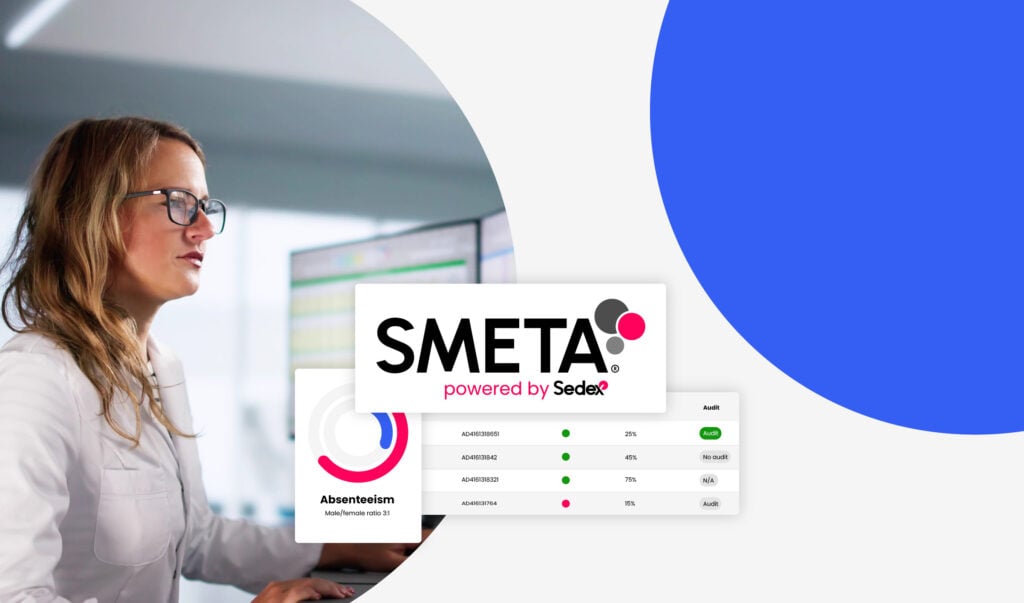What is a vendor management system?
Managing a vast network of suppliers across an intricate global landscape can be a formidable challenge. The right technology platform can simplify and streamline this activity, helping businesses to save time while enabling effective supplier management.
Vendor management
Vendor management is a cornerstone of effective business operations, yet it’s often fraught with complexities and inefficiencies. From onboarding and tracking performance to compliance and mitigating risks, the challenges can be daunting. But there’s a solution that can transform vendor management into a streamlined and strategic process: a vendor management system.
These software platforms serve as comprehensive tools to simplify supplier management, empowering businesses to gain greater visibility, resilience and efficiency in their supply chains.
What is a vendor management system?
Vendor management software provides businesses with a centralised, tech-enabled platform to oversee supplier relationships. These solutions go beyond mere supplier directories, offering a comprehensive suite of features designed to make vendor management more efficient and optimise supply chain operations.
These systems or platforms serve as a command centre for tracking supplier performance and practices across different business areas – from production volumes to energy usage and labour practices. They enable businesses to monitor key performance indicators and service-level agreements to ensure that suppliers are meeting expectations. Vendor management systems also support contract management, allowing procurement teams to store and access contracts in a centralised repository, ensuring easy retrieval for checking compliance with contractual obligations.

Vendor management systems can automate various time-consuming tasks associated with supplier management. From invoice processing to compliance management, these systems streamline workflows and reduce manual labour. This automation not only enhances efficiency but also minimises errors, ensuring accuracy and consistency in a company’s vendor management process.
Types of vendor management systems
When selecting vendor management software, businesses should consider the different types available to choose the one that best suits their needs.
On-premise vendor management software is installed and maintained on a company’s own servers. This offers organisations complete control over their data and security, but requires significant upfront investment in hardware, software, and IT expertise.
Cloud-based vendor management software, also known as Software-as-a-Service (SaaS), is hosted by a third-party provider and accessed via the internet. This eliminates the need for hardware and IT maintenance, making it a cost-effective option for businesses. Additionally, cloud-based systems offer scalability and flexibility, allowing companies to easily adjust their usage as needed.
Cloud-based solutions such as Sedex’s supply chain sustainability Platform may also bring other benefits – such as providing additional technology or data-led tools for supplier data capture, risk analysis and compliance assessment.
Hybrid vendor management software combines elements of both on-premise and cloud-based solutions. Certain components of the system may be hosted on a company’s servers, while others are managed by a third-party provider. This provides organisations with a balance of control and flexibility.
Enterprise vendor management software is designed for large organisations with complex vendor management requirements. These systems offer advanced features and functionalities, such as multi-tier supplier management across multiple areas, contract lifecycle management and spend analytics.
Small business vendor management software caters to the needs of small businesses with limited resources. These systems are typically more affordable and offer simplified features that align with the requirements of smaller organisations.
Understanding the different types of vendor management systems empowers businesses to make informed decisions when selecting the system that best aligns with their size, industry, and specific vendor management needs.
The benefits of a vendor management system
With the complexity of today’s international supply chains, vendor management systems have emerged as game-changing tools that revolutionise the way organisations manage their vendor relationships. They empower businesses to standardise and automate supplier management processes, optimise supply chain practices and spot opportunities to improve efficiency to gain a significant competitive edge in today’s dynamic market.

The benefits of an intelligent, data-driven vendor platform include:
- Streamlined vendor management processes: The right system can offer unprecedented visibility over supplier activities, enabling businesses to track key performance indicators, monitor service-level agreements, and report on vendor performance. By centralising supplier information and automating data analysis, a vendor management system can proactively analyse supplier performance indicators, helping sourcing teams to swiftly address any underperformance, minimise disruptions and maintain service excellence.
- Enhanced compliance and risk management: Beyond enhancing visibility, intelligent vendor management systems can play a critical role in ensuring compliance and mitigating supply chain risks. They can serve as a centralised repository for all vendor documentation, supporting sourcing teams’ efforts to assess suppliers against regulatory requirements, contractual obligations, sustainability standards and more. With the right data analysis capabilities, vendor management software can offer early warning systems that proactively flag potential issues, allowing organisations to take swift action and safeguard operations from potential disruptions.
- Cost reduction and efficiency improvement: Another key benefit of a vendor management system lies in its ability to drive cost reduction and efficiency. By automating time-consuming tasks such as vendor onboarding, invoice processing, performance data analysis and payment management, businesses can optimise resource allocation and save valuable time. Some systems also offer advanced features like spend analytics, empowering organisations to optimise purchasing processes, identify cost-saving opportunities and extract maximum value from their vendor relationships.
- Improved collaboration and communication: Vendor management systems can also foster improved collaboration and communication between businesses and their vendors. A mature platform capable of adapting to different businesses’ needs can then provide a central system for information exchange, document sharing and performance data, nurturing stronger partnerships and ensuring alignment between buyers and suppliers. This enhanced transparency enables organisations to collaborate with suppliers to leverage their expertise and capabilities, driving mutual success.
Simplify supplier sustainability management with the Sedex Platform
Store, share and report on supplier practices across ESG topics with the world’s largest platform for supply chain sustainability.
Over 20 years of innovation and growth, Sedex’s data-led Platform has evolved to a flexible, comprehensive solution used by businesses across supply chains. By being suitable for both smaller supplier businesses and large buying organisations, Sedex enables efficient data-capture, information exchange and analysis on a global scale.
Integrated within our Platform, our solutions for supply chain ESG include:
- Supplier Self-Assessment Questionnaires: Gather and analyse data on labour, management practices, environmental areas and more.
- SMETA audit: Understand sustainability practices, risks and compliance at individual sites in supply chains with our in-person assessment.
Speak to our team about how Sedex’s Platform can help your business leverage these advancements and transform your vendor management practices.



